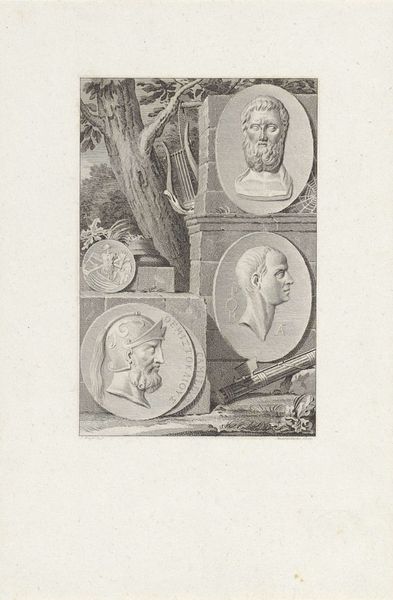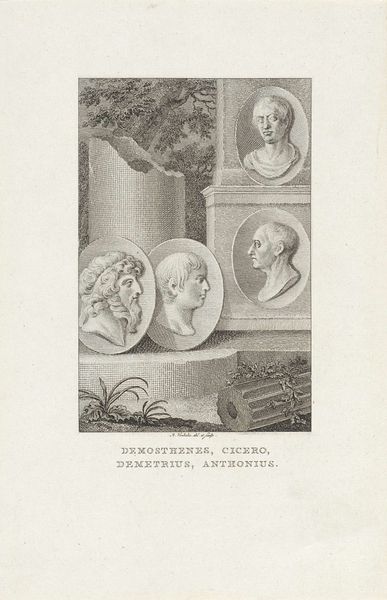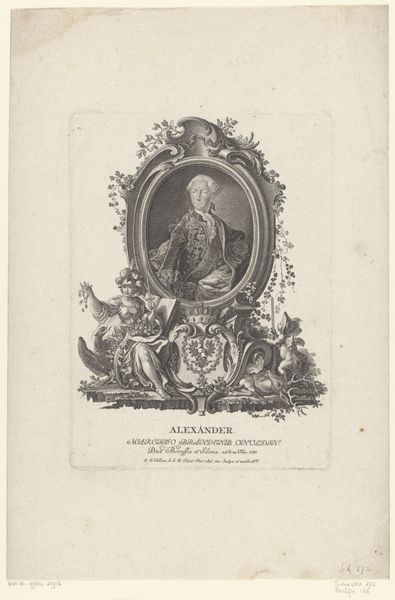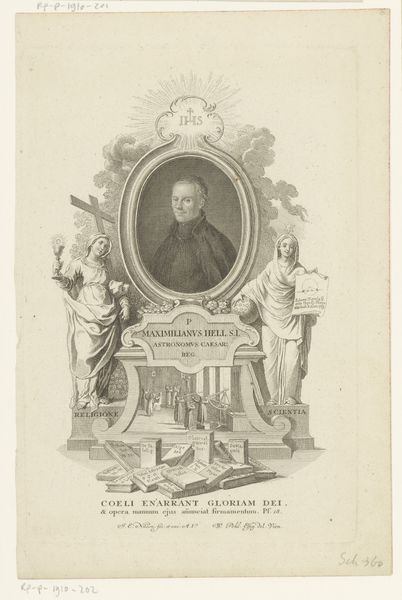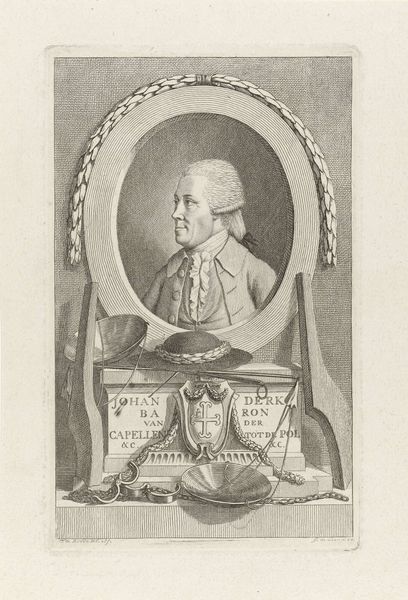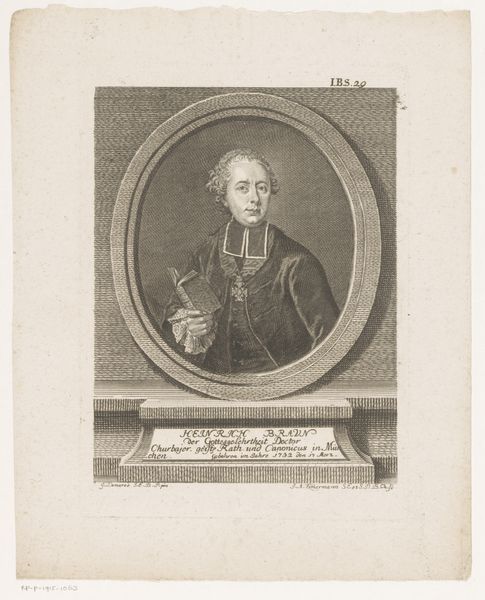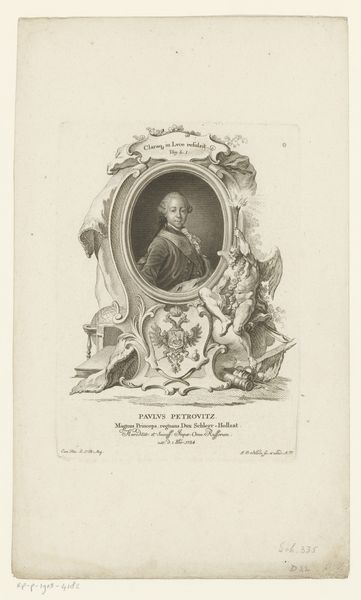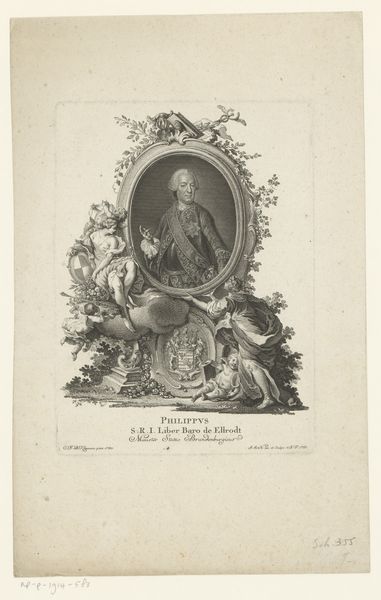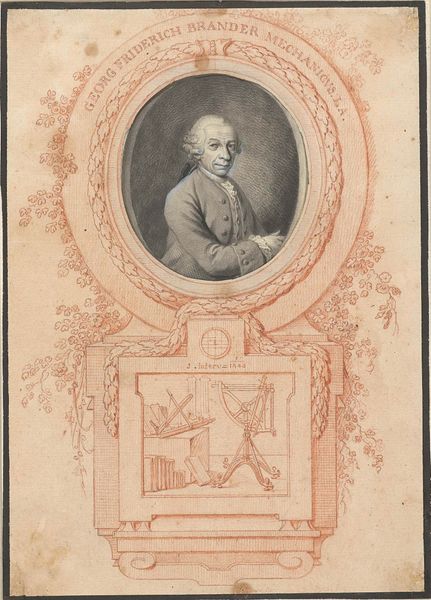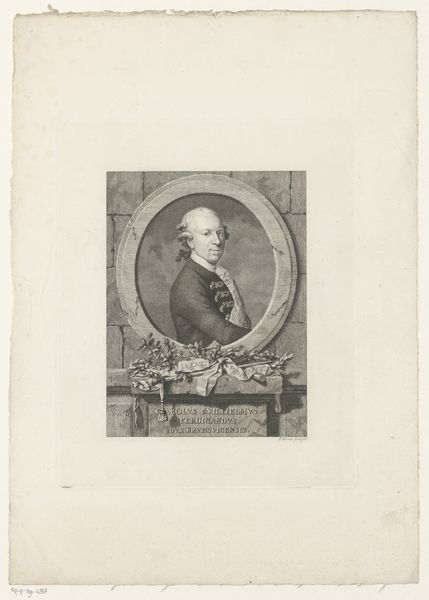
print, etching, engraving
#
portrait
#
neoclacissism
# print
#
etching
#
group-portraits
#
history-painting
#
academic-art
#
engraving
Dimensions: height 212 mm, width 141 mm
Copyright: Rijks Museum: Open Domain
This anonymous print, made in 1813, portrays the Triumvirate of 1813, those three figures who temporarily took power in the Netherlands after the departure of the French. Note the classical architecture in the background. A cherubic figure rests atop the pillar. The cherub is a descendant of Cupid and Eros, figures who themselves represent a life force. Here, though, this winged child may be a symbol of divine approval, as is often used in triumphal arches and monuments. The pillar—often used in similar monuments since antiquity—symbolizes strength and stability. We see it echoed in the Renaissance, and even today, though now it may be skyscrapers reaching towards the heavens. This motif continues to hold power, tapping into our collective memory. The image invokes a sense of admiration, subtly encouraging us to view these figures as pillars of society. The classical imagery, laden with historical weight, anchors the new political reality in a long tradition.
Comments
No comments
Be the first to comment and join the conversation on the ultimate creative platform.
